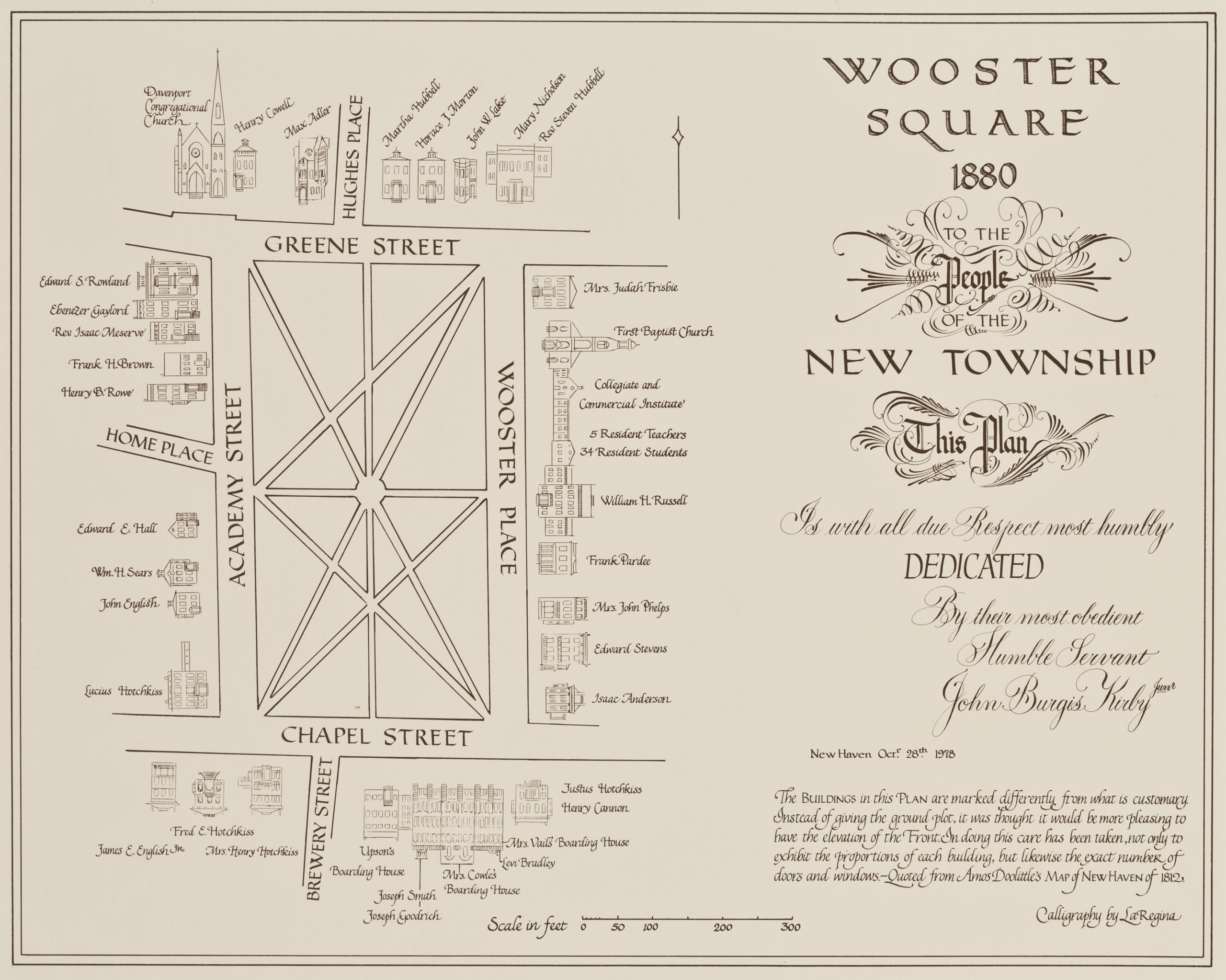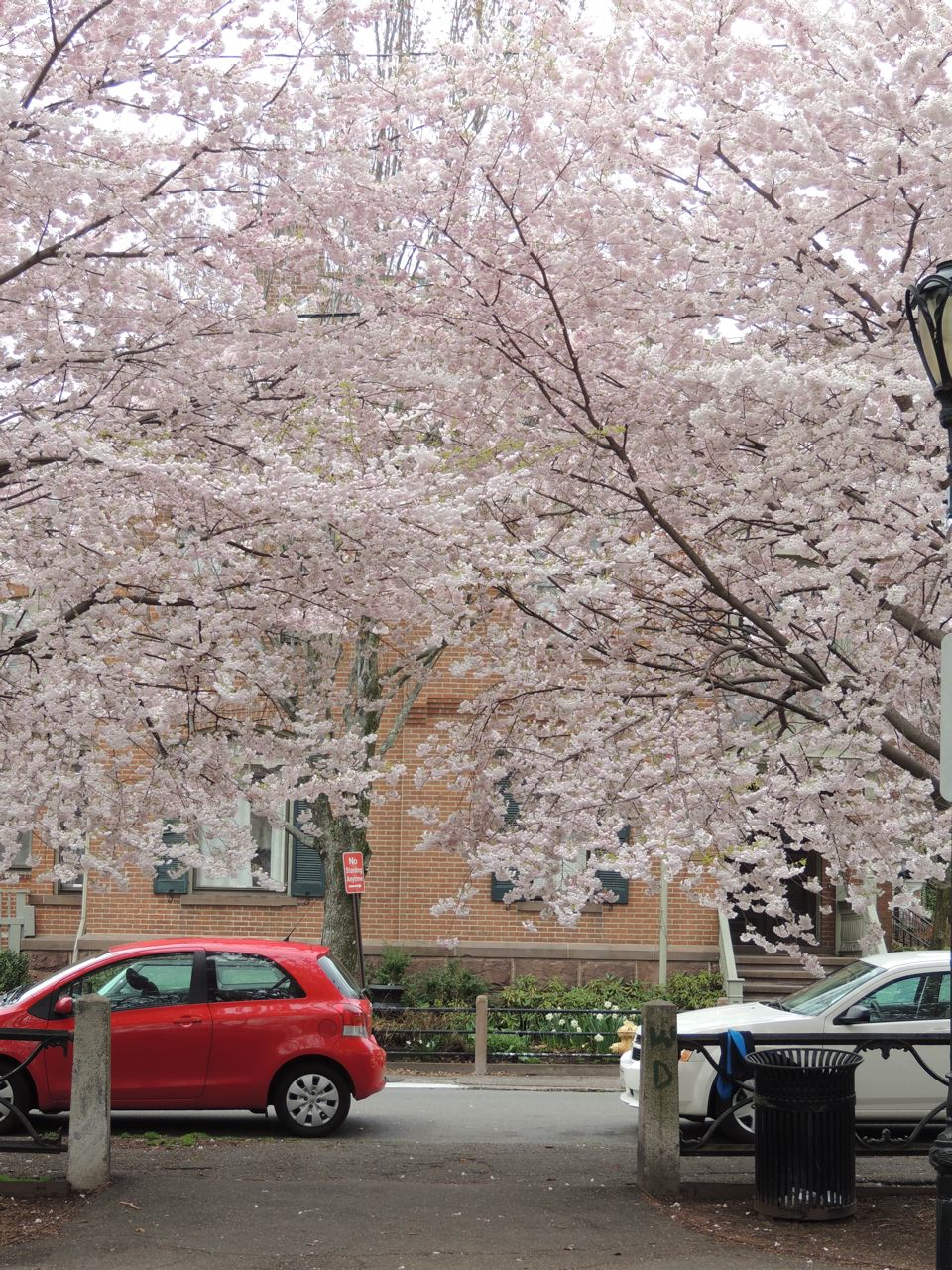By Frank Mitchell
(c) Connecticut Explored Inc. Winter 2013-2014
Subscribe/Buy the Issue!
A special exhibition at The New Haven Museum, Beyond the New Township: Wooster Square, on view through February 28, 2014, chronicled the neighborhood’s long history. Through decades of transition a strong sense of community and a fierce attachment to the neighborhood’s park has prevailed.
Yoshino cherry trees, unlike some earlier immigrants, came to Wooster Square Park as celebrities. In the spring of 1974 neighbors, elected officials, and the press welcomed them with a festival. Residents, Historic District commissioners, and the Parks Department had worked to bring trees to the park to celebrate the area’s historic status and its residents’ commitment to an aesthetic standard they had realized and maintained across generations.
As lead exhibition curator Betsy Fox found in her research, in the early 19th century Wooster Square’s founding residents built dignified homes in the Federal style in the section they called the New Township. They envisioned the local park as a common greenspace that united residents. Their successors hired Henry Austin and other prominent architects in the mid-19th century to design elegant homes reflecting their achievements as leaders in the industries that produced carriage parts, rubber products, shirts, corsets, and even carpets. They also recognized the park as an asset requiring protection and planned for subscriptions to pay for maintenance and the creation of the signature iron fence (1860). The fence represented a pledge to secure the park for future generations.
The nearby Candee Rubber Co., C. Cowles & Co., Strouse, Adler, and Sargent & Company factories needed laborers, and northern, eastern, and southern Europeans came to fill that need. The most industrious succeeded, sacrificed, and eventually bought homes along the side streets near the factories. Factory owners soon migrated to other neighborhoods, leaving their grand homes and the park for another generation.

A map of Worcester Square as it looked in 1880, 1978. Whitney Library Map Collection, New Haven Museum
As new workers moved to the area, Wooster Square became a neighborhood of immigrants. Workers from France, Sweden, Lithuania, and, by the early 20th century, Italy claimed the area. Home ownership was the reward for the demanding work at the factory and signaled success. Residents personalized and embellished the houses, small yards, and gardens by cultivating non-native plants, flowers, and even olive, citrus, and fig trees.
The financial depression of the 1930s hit the neighborhood hard. Work in the nearby factories slowed dramatically, and residents in the vicinity felt the impact immediately. Wooster Square was one of the New Haven neighborhoods most heavily affected by 1929’s economic collapse. Job loss led to housing loss for some; for the more fortunate residents who managed to keep their homes, maintaining their property became onerous. The park, too, fell on hard times.
World War II, an economic resurgence, and a new wave of migration to New Haven convinced post-war mayor Richard C. Lee that neighborhood renewal was overdue—and that it would begin with Wooster Square. Years of planning and politicking brought incredible change to the area: Highway I-95 redefined Wooster Street; industrial sites moved to one section while retail moved to another; some streets disappeared; old houses were restored and new houses joined them; a school and senior center moved onto the square; and some longtime residents moved away.
The original plan for renewal threatened the park, but community response saved it and forced a reevaluation of the city’s preservation goals. For me, the Yoshino cherry trees—with an annual cherry blossom festival, environmentalist research projects, artist and photographer renderings, Web sites and pilgrimages, and volunteer gardeners who tend the new beds and plantings around the park—are the promise to the old neighborhood made in the language of the current one.
Frank Mitchell was a consulting curator to the New Haven Museum’s Beyond the New Township: Wooster Square.
Explore!
New Haven Museum, 114 Whitney Avenue, New Haven
newhavenmuseum.org

